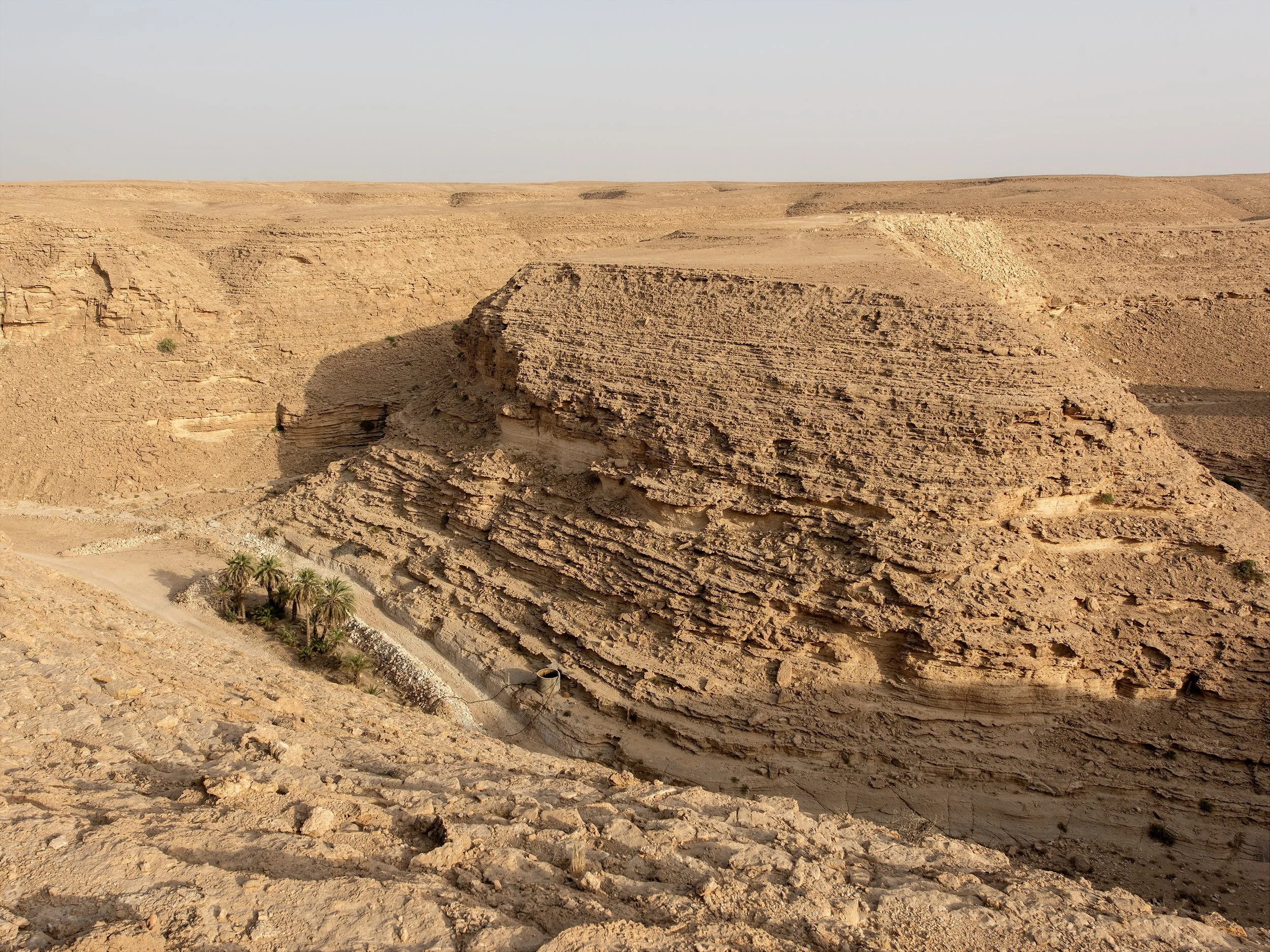Points Known and Unknown
Work In Progress
The desert, despite its fast association with sparsity and a landscape that is both monotonous and monochromatic, is a study in apparent deception: an observer only needs to get close to notice a rich variety in its seemingly uniform geology and ecology. But beyond the readily observable, often, its barren composition gives it the ability to reveal the hidden: the past, the challenges of climate change, the conflict of nature versus culture, and perhaps even the future.
At first glance, Points Known and Unknown is a visual survey of the one of the great deserts, the vast Arabian Desert covering most of the Arabian Peninsula. However, the work aspires to go deeper and in that particular setting aims to reveal human history, the human condition, and the impact of human action on the environment and cultural landscapes. It is notable that even a seemingly “untouched” and “empty” landscape—as large areas across the Arabian Desert appear—can speak to all of the complexity and interrelation of natural and human factors at a moment of transition, where the human element is consistently posing a growing challenge at its intersection with its natural counterpart.
Natural history abounds here, evidenced in the rock formations, mineral deposits and fossilized remains of life, exposed and appearing as if unchanged since the day of their creation—a geologist can simply read the landscape as its history is written over it. Human history, following its own development path, reveals itself too, though it is harder to detect. Traces of past habitation appear as petroglyphs or artefacts at countless ancient gathering spots and settlements—the landscape starts to quietly speak back about its human past revealing a profound ancestral connection to the land, and to our rational minds, offers a remarkable inversion of the “meaning” of a place: to see it one way—as pristine and pure nature—and in an instant see it another way—as having had a rich former life of human habitation.
But the desert of today presents a complex picture where a contextualized landscape is not always a concern and progress and modernity extend the same pressures on the environment as elsewhere. Points Known and Unknown examines this developing relationship of the natural landscape and its intersections with modern culture while extending its vision back as a reference point to compare, contrast and inform. Through an examination of this unique place in the world, exploring its natural, historical and current political transformations, the work will give deep insight into a landscape still full of mystery, yet at the same time offer reflections on humans’ place on the planet.






















